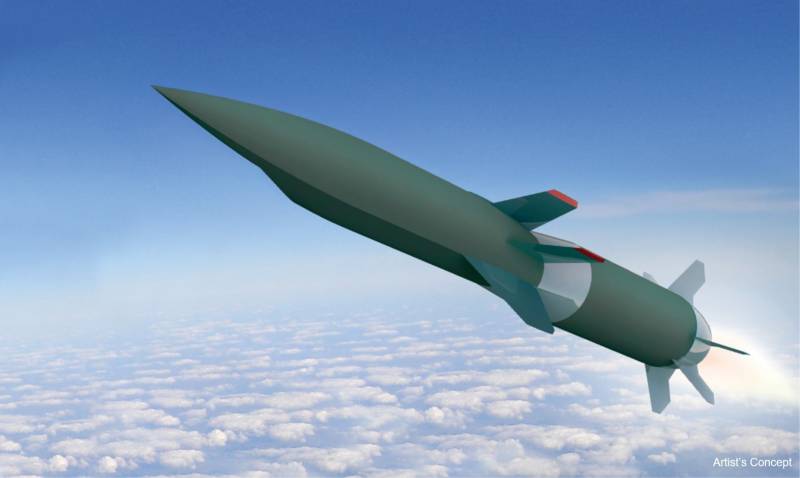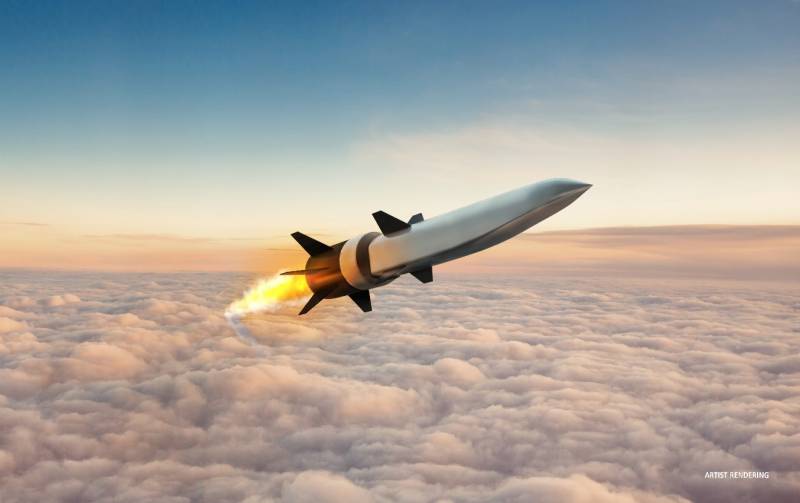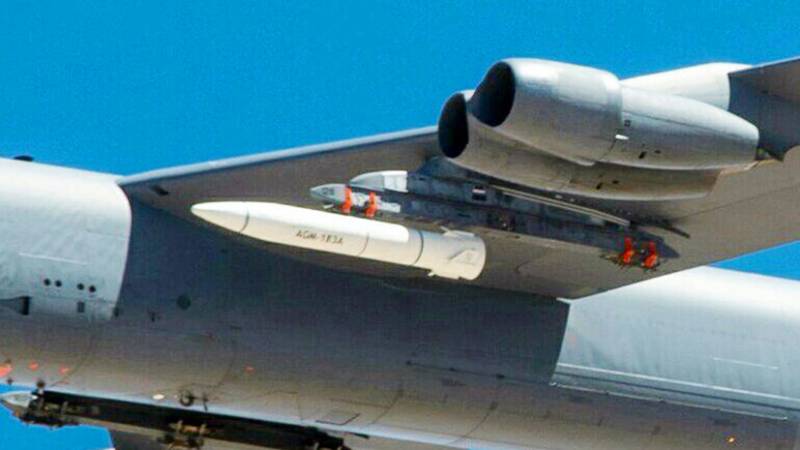Air-based hypersound: new tests under the DARPA HAWC program
In the United States, work continues on the Hypersonic Air-breathing Weapon Concept (HAWC) research program, the purpose of which is to search for the main technologies for creating a promising air-launched hypersonic missile. By order of the Air Force, two projects of this kind are being developed in parallel. Last fall, one of them reached the first test flight. The second project moved to the flight test stage only a few weeks ago.
According to official data
The first flight of a new type of prototype rocket was reported by the advanced development agency DARPA on April 5. The prototype was developed by Lockheed Martin and powered by a new type of engine from Aerojet Rocketdyne. The tests were carried out with the participation of development organizations, DARPA and the US Air Force.
The date and place of the first flight are not reported, but other information is provided. So, during the tests, the carrier aircraft raised the HAWC demonstrator to a predetermined height and gave it an initial speed, after which it performed a reset. With the help of an accelerating engine, the product increased its speed to the required level, after which the marching ramjet engine was launched. With its help, the rocket flew along a given route.
DARPA indicates that in flight, the HAWC product maintained a cruising speed of more than 5M for a long time. The maximum height of 65 thousand feet (19,8 km) was reached. The test flight range exceeded 300 nautical miles (555 km).
According to an official press release from DARPA, the collected data is now being analyzed. Based on its results, the Air Force will offer all the necessary information about promising technologies and capabilities. It is noted that within the framework of the HAWC program, two rocket designs have been successfully shown, and the customer will be able to choose the most successful one.
It is curious that the date of the test was not announced. At the same time, the American media learned from unofficial sources that the test launch took place in mid-March. Until recently, for political reasons, it was kept secret. The Pentagon did not want third countries to consider the planned test as a signal or a promise - especially against the backdrop of the current situation.
Prospective program
Over the past years, the Pentagon, represented by DARPA and other structures, has been developing several promising programs for hypersonic weapons of different classes for different types of troops at once. In particular, the ARRW and HAWC projects are intended for the Air Force. They provide for the creation of hypersonic air-to-surface complexes with different technical features and characteristics.
In 2018, the Air Force and DARPA launched the first stage of the HAWC program and entered into two contracts for project development and testing. The first version of the rocket is being created by Raytheon using a ramjet engine from Northrop Grumman. The second contract went to Lockheed Martin, which joined forces with Aerojet Rocketdyne. Over $900 million was allocated for each of the projects.
Raytheon and Northrop Grumman have already completed the design work and moved to the testing stage. In September 2020, an experimental rocket of their development made its first flight on an external carrier sling. About a year later, in September 2021, the first full-fledged launch and independent flight took place. It was reported that Raytheon HAWC reached speeds of more than 5M and confirmed all the characteristics. Other details were not reported, but the flight was considered successful.
Now, a competing project from Lockheed Martin has also been brought to flight tests. So far, only one independent flight has been completed, but the experimental rocket helped to collect all the necessary data for further work. In the near future they will be analyzed and, if necessary, the project will be adjusted.
Whether new test launches are planned is unknown. Obviously, new tests are necessary for further development of projects, but at the current stage, the HAWC program can do without them. The two prototypes showcased common concepts and key technologies, and more is yet to come.
By October, the Air Force and DARPA plan to complete the analysis of the collected data and draw conclusions. They will decide whether to continue work on ramjet air-launched missiles. If the decision is positive, the HAWC program will continue, and the most successful technology demonstrator will be turned into a full-fledged weapon. In this case, there is a possibility of abandoning the project for one reason or another.
Experimental look
Participants in the HAWC program have not yet disclosed the appearance of two hypersonic missiles. Images from artists have been published, but their correspondence to real projects is in question. Most of the technical and technological information also remains closed. However, the most interesting information has already been published and allows us to draw some conclusions.
The Lockheed Martin HAWC prototype rocket is a full-fledged aircraft with its own propulsion system. It can have limited dimensions and weight, which will ensure compatibility with tactical and strategic aviation USA. It is supposed to use special hull contours and a characteristic bucket air intake.
The concept from DARPA shows a two-stage rocket with an upper stage that is dropped after operation. However, in the project from Lockheed Martin, a scheme with a single marching stage can also be used. Aerojet Rocketdyne is currently working on a dual-mode ramjet capable of operating in all flight modes. It cannot be ruled out that such a product is already ready for flight tests and was used on an experimental HAWC rocket.
The missile must have an autopilot and be equipped with a homing head. The planned way to search for the target is unknown. Questions also remain regarding hitting the target. A missile can have a full-fledged warhead or hit a target only due to its kinetic energy.
Hypersonic capabilities
Of particular interest are the declared characteristics of the rocket. Its range exceeds 550 km, and the speed of at least 5M can be maintained on the route. This means that the product is capable of reaching the target at maximum range in a matter of minutes and hitting it. At the same time, in theory, a breakthrough is provided for existing or prospective air defense systems, which do not leave time for a full-fledged reaction.
It should be noted that the speed of both HAWC missiles is almost at the lower limit of hypersonic, which may limit the overall capabilities and combat potential of the product. At the same time, the requirements for the design as a whole and its individual units are reduced, and this should reduce the cost of production and operation.
With all this, two projects are being developed simultaneously in the HAWC program. It is likely that two development teams use different ideas and solutions in their projects, which gives different results. According to the results of the tests, the customer gets the opportunity to compare the finished samples and their components and draw the necessary conclusions.
The future of missiles
Thus, the experimental program of DARPA and the US Air Force under the designation HAWC is successfully moving forward and generally solving the tasks set. The development of the second prototype rocket has been completed and it has even been tested. This means that now the customer can begin to fully analyze and plan for the future.
The future results of the HAWC program are still unknown, but its goals are already clear. First of all, the fundamental possibility and expediency of using hypersonic air-to-surface missiles in tactical and strategic aviation is being studied. There is also a search for the necessary technologies. In addition, specialists are looking for the optimal level of performance, technical and economic, and also find out what can be sacrificed to obtain it.
The analysis of the collected data will take several months. In mid-autumn, DARPA and the Air Force plan to take stock of the current research program. If the projects from Raytheon and Lockheed Martin were able to show the required level, the HAWC program will develop and in the future will lead to the emergence of new aircraft weapons. However, it may turn out that it has no real prospects - and then it will be closed, although this is unlikely.



Information